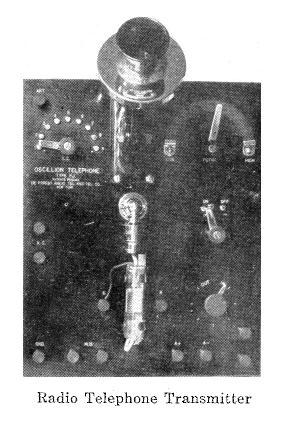
The range is from one to five miles. The lighting circuit is to operate on six volts and the "B" or high voltage circuit requires 250 to 350 volts, depending on the distance to be covered. This circuit is controlled by the usual potentiometer employed in all the latest Audion instruments. The set is mounted on a panel measuring 11 by 13 inches.
This set may be used also as a transmitter of undamped waves as a telegraph and then has a radius of about twice the telephone range.